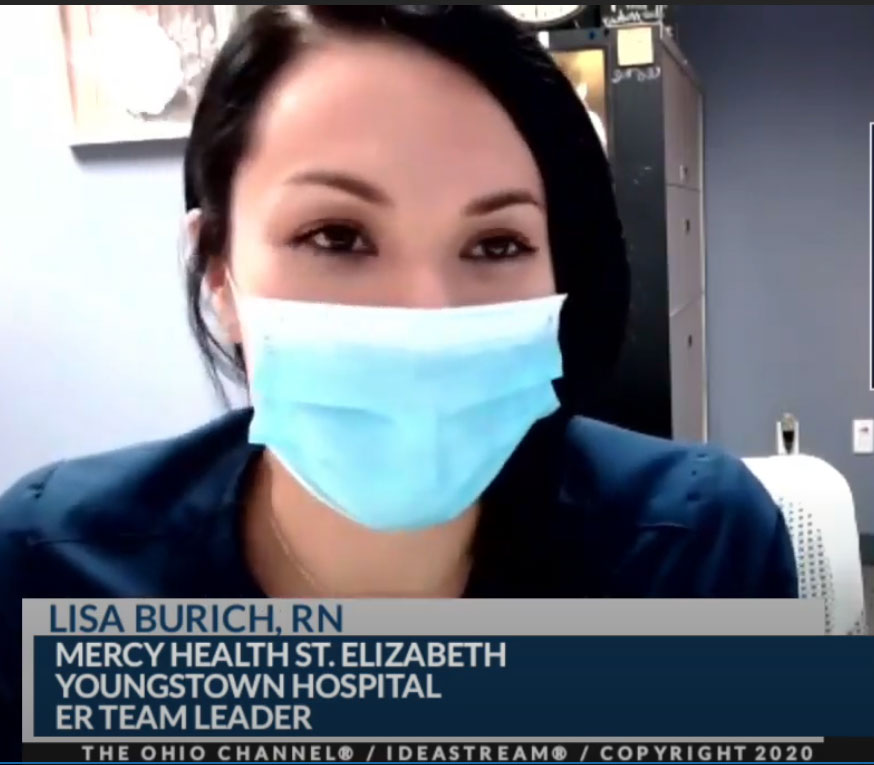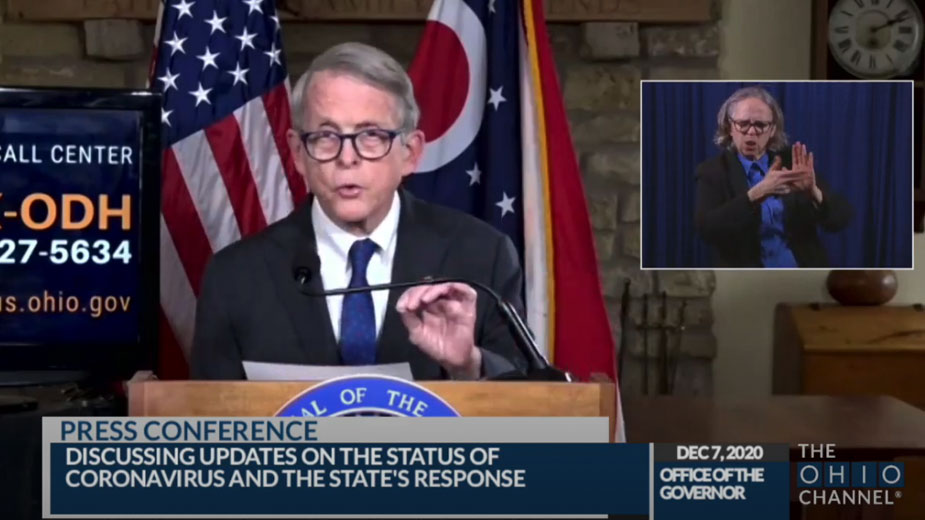DeWine Likely to Extend Curfew; Adding Antigen Tests to Daily Count
CEDARVILLE, Ohio — During a virtual press conference Monday, Gov. Mike DeWine indicated the state will extend its 10 p.m. curfew, which is set to expire this week.
DeWine will discuss more details about the curfew extension during his conference Dec. 10, he said. The 21-day curfew began Nov. 19 in an effort to limit Ohioans’ contacts with others. It was passed in lieu of closing businesses completely, particularly those in the food service industry.
The statement came after DeWine was questioned by a member of the press on what he meant by a tweet on Dec. 4, in which he wrote “The curfew, mask-wearing, retail inspection have helped, but they haven’t helped enough. We’ll have to do more. We don’t have a choice.”
DeWine clarified the tweet Monday, saying Ohioans need to continue taking steps to minimize their contacts with others outside of their households and wearing masks when around anyone who is outside of their bubble.
“We’ve made real progress with masking in retail,” DeWine said. “We just have to do more of that. We have to reduce the number of our contacts with other people.”

During the conference, the governor invited two front-line health care workers to discuss their experiences, including Lisa Burich, an emergency room team leader from Mercy Health-Youngstown St. Elizabeth Hospital. The Level 1 Trauma Center is “in the thick of it,” and has seen an influx of COVID-19 patients that’s put it at capacity, Burich said.
“We’re holding our critically ill patients here in the ER sometimes for days at a time,” Burich said. “We’re just really bogged down.”
The toughest part of the day, she said, is the fear that the staff might take the virus home to their families, she said. Between that and the stress of battling COVID-19 for the last 10 months, “morale is down among staff,” she said.
“We’re exhausted physically and mentally,” she said. “We’re definitely leaning on each other for strength at this time.”
There had been speculation that DeWine’s tweet indicated he intended to enact additional steps, possibly renewed closures, in light of the increasing case counts and hospitalizations in the state. However, the governor gave no indication Monday that was the case.
He did, however, say that Ohioans can expect a one-day spike in cases Tuesday as the state adds antigen testing numbers to its daily case count.
At the start of the pandemic, the state relied heavily on PCR tests, which DeWine said was the “gold standard.”
In the spring, however, the Centers for Disease Control and Prevention began accepting antigen positive test results, provided they had an epidemiologic link. In other words, if an individual received a positive antigen test, he also had to have a known exposure to someone who was COVID positive or must have had symptoms, DeWine said.
Since the spring, the Ohio Department of Health has worked closely with county health departments to verify links for those antigen tests, he said. Once verified, the tests were included in the state’s probable case counts.
“After understanding more about antigen tests, the CDC changed their definition in August,” he said. Thus, antigen tests could be included in case counts without added verification per the CDC.
Ohio, however, continued to manually verify the exposures and symptoms before including antigen tests in its positive count, DeWine said.
In the last two months, Ohio’s cases have “skyrocketed” and it’s been averaging 12,500 antigen tests per day, he said. On average, those tests result in about 700 positive cases daily.
Antigen tests have doubled in the last four weeks and the positive results have increased to about 725 daily from about 332.
“Just as our hospitals are feeling the effects of this surge in cases, so are the department of health epidemiologists and the local health departments,” he said. “These teams alerted us about three weeks ago that they were simply unable to keep up with the manual verification process for antigen tests, because there’s such a wide spread of the virus throughout the state of Ohio.”
Starting Dec. 8, the state will align with the CDC’s current case definition and will be reflecting those tests immediately in the daily reported case counts from the ODH moving forward. Currently, the state has 12,600 positive antigen tests in its pending queue.
“Tomorrow, we will clear those backlogged antigen tests and they will be added to our reported case counts,” he said. “That will result in a one-day spike in reported cases tomorrow. And obviously, it will be a very significant spike.”
When reviewing positivity data on the state’s Coronavirus website, viewers will be able to toggle between PCR, antigen and both tests to compare the data. The combined rate will be the default reported count.
Copyright 2024 The Business Journal, Youngstown, Ohio.



